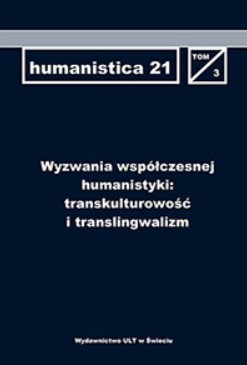Zum Einfluss der Sprachkontakte auf den Sprachwandel
On the influence of language contacts on language change
Author(s): Michail L. KotinSubject(s): Theoretical Linguistics, Syntax, Historical Linguistics, Comparative Linguistics
Published by: Wydawnictwo ULT w Świeciu
Keywords: language contacts; language change; grammatical categories; syntactic constructions; dativus absolutus; definite article;
Summary/Abstract: The paper presents an investigation into the influence of language contacts on grammatical change. The study confronts two opposite theories, namely: the thesis about unlimited effects of language contact (the so-called anything goes-hypothesis) and the claim that grammatical change is in principle based on the genuine evolution of mother tongues. On the basis of a corpus analysis of Biblical texts, we can assume that the second hypothesis seems to be more convincing. This claim is supported by both numerous studies on the results of language contacts in boarder areas including the specifics of language acquisition in the regions of contact, and the analysis of influences in texts translated from one language to another. The latter type of texts, i.e. grammatical constructions of old Germanic languages translated from Greek and Latin, which are investigated in this paper, demonstrates numerous features of syntactic autonomy maintained regardless of the influence of a foreign language. Changes in syntactic constructions are, thus, not mechanistically borrowed from the respective source, but they rather emerge as the results of a genuine development. Indeed, this development can be heavily accelerated thanks to the influence of a foreign language, but it demonstrates its own logic of the evolution of grammatical forms and their categorial functions. Constructions investigated in this paper, i.e. the so-called dativus absolutus and clauses with the definite article, are reflected in the translations of religious texts into the old Germanic languages (East Germanic – Gothic and West Germanic – Old High German) at the time of Christianisation of the Germanic people. The analysis has shown that in both cases the borrowing process does not only have the character of a plain transfer of the constructions in question, but it also gives evidence for an obviously autonomous, genuine development of these grammatical forms in the investigated mother tongues. The foreign language is, thus, a pattern which accelerates and fixes the tendencies descending from the genuine development of these entities and their categorial functions in recipient languages. The analysis of the source material allows one to establish the main principles of the development of the grammatical forms under the influence of a foreign language in written texts, and thus, it concerns essential fragments of language phylogenesis and language contacts including the influence of cultural factors. Nevertheless, the latter ones play, as this empirical analysis proves, only a secondary, subordinate part in grammatical change, while the genuine factors are the changes conditioned by the evolution of language forms as such inside the system. As for the nominal constructions with participle phrases of the dativus absolutus type, one can claim that these entities are borrowed only in the sense that they follow a general pattern of a specific case function (in old Germanic and old Slavic it is the dative case), but not as true borrowings from the construction sensu stricto, because the corresponding case in Greek is not dative, but genitive, and it is the ablative case that performs the very same function in Latin. Regarding the influence of Greek on the development of definiteness markers in Gothic, one can detect that this influence is also only indirect.
Journal: humanistica 21
- Issue Year: 3/2019
- Issue No: 3
- Page Range: 39-57
- Page Count: 19
- Language: German

